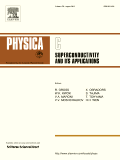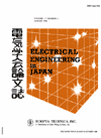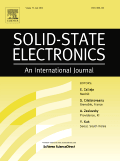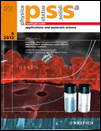
PHYSICA C-SUPERCONDUCTIVITY AND ITS APPLICATIONS
Scope & Guideline
Driving Insights in Condensed Matter Physics
Introduction
Aims and Scopes
- Superconducting Materials Research:
The journal emphasizes the development and characterization of superconducting materials, particularly high-temperature superconductors (HTS) and their composites. This includes studies on the synthesis, structural properties, and critical temperature assessments. - Theoretical and Computational Studies:
There is a strong focus on theoretical models and computational approaches to understand superconductivity mechanisms, including studies on electron-phonon interactions, vortex dynamics, and the effects of various physical parameters on superconducting properties. - Device Engineering and Applications:
Research on the design, optimization, and testing of superconducting devices, such as magnets, cables, and fault current limiters, is a key area. This includes practical applications in fields like magnetic levitation, energy storage, and quantum computing. - AC Loss and Thermal Analysis:
The journal features studies related to the AC loss in superconducting materials and devices, which is critical for their performance in alternating current applications. Thermal behavior and stability during operation under varying conditions are also explored. - Magneto-thermal Coupling:
Research on the interaction between magnetic fields and thermal dynamics in superconductors is a significant theme, involving simulations and experimental studies to understand quench phenomena and stability in superconducting systems.
Trending and Emerging
- High-Temperature Superconductors (HTS) Innovations:
Recent publications indicate a growing emphasis on innovative applications and improvements in HTS materials, including their use in energy systems, transportation, and advanced electronic devices. - Machine Learning and AI Applications:
The application of machine learning and artificial intelligence in predicting superconducting properties and optimizing material synthesis is gaining traction, marking a significant trend towards data-driven approaches in superconductivity research. - Integration of Superconductors in Quantum Technologies:
Research is increasingly focusing on the integration of superconducting materials in quantum computing and quantum information systems, reflecting the growing interest in their unique properties for advanced technological applications. - Environmental and Energy Applications:
There is a notable rise in studies aimed at the environmental impact and energy efficiency of superconducting systems, particularly in relation to renewable energy integration and sustainable technology. - Advanced Characterization Techniques:
Emerging themes include the use of advanced characterization techniques, such as synchrotron radiation and electron microscopy, to gain deeper insights into the microstructural properties of superconductors, enhancing the understanding of their behavior.
Declining or Waning
- Low-Temperature Superconductivity:
Research focused on traditional low-temperature superconductors appears to be waning compared to high-temperature superconductors. This shift may be due to the broader applicability and interest in HTS materials in technological advancements. - Classical Josephson Junction Studies:
While still relevant, the volume of research specifically dedicated to classical Josephson junctions has decreased, potentially overshadowed by advances in novel superconducting materials and hybrid systems that incorporate complex interactions. - Magnetic Applications of Superconductors:
Interest in purely magnetic applications of superconductors, such as magnetic bearings and magnetic shielding, has seen a decline, with researchers increasingly focusing on energy-related applications and quantum technologies.
Similar Journals

ELECTRICAL ENGINEERING IN JAPAN
Connecting Researchers to the Pulse of EngineeringELECTRICAL ENGINEERING IN JAPAN is a leading academic journal published by Wiley, dedicated to advancing the field of electrical and electronic engineering as well as energy engineering and power technology. With an ISSN of 0424-7760 and an E-ISSN of 1520-6416, this journal has been a vital resource since its inception in 1968, appealing to a diverse audience including researchers, professionals, and students interested in the latest innovations and developments within the field. Despite currently holding a Q4 ranking in both Electrical and Electronic Engineering and Energy Engineering and Power Technology categories, the journal remains committed to disseminating significant research that contributes to technological advancements. Although it does not offer Open Access options, articles are peer-reviewed to ensure academic rigor and integrity. With each publication, ELECTRICAL ENGINEERING IN JAPAN continues to play an essential role in fostering a deeper understanding of the engineering landscape, ultimately helping to shape the future of electrical engineering on a global scale.

Journal of Superconductivity and Novel Magnetism
Bridging Fundamental Science with Technological BreakthroughsJournal of Superconductivity and Novel Magnetism, published by SPRINGER, is a premier venue for research in the dynamic fields of condensed matter physics and materials science. With an ISSN of 1557-1939 and an E-ISSN of 1557-1947, this journal provides an essential platform for disseminating innovative studies examining the complexities of superconductivity and magnetic phenomena. The journal is recognized for its contributions, holding a Q3 quartile ranking in both condensed matter physics and electronic, optical, and magnetic materials as of 2023. With a commitment to rigor and relevance, it features research that breaks new ground in understanding the properties and applications of superconducting materials, aiming to bridge fundamental science with technological advancements. Despite its lack of open access, the journal remains pivotal for researchers, professionals, and students keen to stay abreast of cutting-edge developments in the field, making it an indispensable resource for cultivating knowledge and promoting collaboration.

SOLID-STATE ELECTRONICS
Advancing the Frontiers of Solid-State PhysicsSOLID-STATE ELECTRONICS, published by Pergamon-Elsevier Science Ltd, is a highly regarded journal committed to advancing the field of solid-state physics and its applications. With an ISSN of 0038-1101 and an E-ISSN of 1879-2405, this journal has been a cornerstone of scholarly communication since its inception in 1960. Covering a rich spectrum of topics, it features in the Q3 category for Condensed Matter Physics, Electrical and Electronic Engineering, and Materials Science, reflecting its robust engagement in these critical fields. Despite not being an open-access journal, it provides valuable insights and research findings accessible to both academia and industry professionals, ensuring the dissemination of cutting-edge knowledge. With a strong focus on empirical research and theoretical developments, SOLID-STATE ELECTRONICS aims to bridge the gap between fundamental science and practical application, making it an essential resource for researchers, professionals, and students alike in the United Kingdom and beyond.

ACTA PHYSICA SINICA
Championing Quality Research in Physics and BeyondACTA PHYSICA SINICA is a prominent journal published by the Chinese Physical Society, dedicated to the dissemination of groundbreaking research in the field of physics and astronomy. Established in 1993, this journal has consistently contributed to the scientific community by publishing high-quality articles that cover a wide range of topics within general physics and related disciplines. Although currently classified in Q4 of the physics and astronomy category by Scopus, ACTA PHYSICA SINICA plays an important role in fostering collaboration and communication among researchers in China and around the world. With a substantial readership, this journal is poised to remain a valuable resource for professionals, researchers, and students alike. By providing in-depth analysis and insights, it aims to advance the understanding and application of physical principles in various technological and scientific advancements. The journal is accessible via subscription, ensuring that contributors and readers can engage with the evolving landscape of physics research. For more information, visit the publisher's website.

Journal of Advanced Dielectrics
Elevating the Standards of Dielectric and Material ResearchThe Journal of Advanced Dielectrics, published by World Scientific Publishing Co Pte Ltd, is a pivotal open-access platform since 2014 dedicated to advancing research in the fields of dielectrics, ceramics, and composites. Based in Singapore, this journal aims to bridge the gap between theoretical developments and practical applications in Electrical and Electronic Engineering, Condensed Matter Physics, and Electronic, Optical, and Magnetic Materials. With an impressive classification in the 2023 Quartile Rankings indicating its significance within its categories, and notable Scopus Rankings that highlight its impact and relevance, this journal serves as a vital resource for scholars and professionals committed to cutting-edge research and innovation. As it continues to flourish through the converging years from 2015 to 2024, the Journal of Advanced Dielectrics stands as an essential conduit for the dissemination of knowledge in advanced material sciences, making it an indispensable asset for today's research community.

Electrical Control and Communication Engineering
Driving progress in electrical control and communication systems.Electrical Control and Communication Engineering is a premier Open Access journal dedicated to the vibrant fields of electrical engineering, control systems, and communication technologies. Published by SCIENDO, this journal not only aims to disseminate significant research findings since its inception in 2012 but also fosters a collaborative platform for researchers, professionals, and students from around the globe. With its commitment to high standards and rigorous peer review, the journal seeks to advance the collective understanding of innovative technologies and methodologies in electrical control and communication systems. With an ISSN of 2255-9140 and an E-ISSN of 2255-9159, the journal is gaining visibility and impact within the academic community, encouraging open and accessible scholarship to drive progress in this critical sector. Housed in Warsaw, Poland, it is poised to be an invaluable resource for those engaged in cutting-edge research and applications in electrical and communications engineering.

JOURNAL OF EXPERIMENTAL AND THEORETICAL PHYSICS
Exploring the Nexus of Theory and ExperimentationJournal of Experimental and Theoretical Physics is a distinguished publication in the field of physics, dedicated to disseminating pioneering research and fostering intellectual discourse in both experimental and theoretical domains. Published by Pleiades Publishing Inc, this journal has established itself as a crucial platform for physicists, with a commendable Q3 categorization in the 2023 rankings within Physics and Astronomy, illustrating its impactful contributions to the discipline. The journal features a wide array of articles that delve into the intricacies of physical theory, experimental techniques, and applications, making it an invaluable resource for researchers, professionals, and students alike. Although it operates under a traditional access model, its longstanding history, dating back to 1980 and converging years through to 2023, underscores its commitment to advancing the frontiers of physics knowledge. The journal is also notable for its engagement in the scientific community, aiming to bridge the gap between theoretical predictions and experimental validations. As a part of Pleiades Publishing, it continues to uphold rigorous standards of academic excellence, inviting contributions that push the boundaries of current understanding and stimulate further exploration in the fascinating world of physics.

LOW TEMPERATURE PHYSICS
Pioneering Research in Low-Temperature PhysicsLOW TEMPERATURE PHYSICS, published by AIP Publishing, is a premier academic journal dedicated to the exploration and dissemination of research in the field of low-temperature physics. With an ISSN of 1063-777X and an E-ISSN of 1090-6517, this journal serves as a vital resource for researchers, professionals, and students eager to delve into the intricacies of thermal phenomena at reduced temperatures. Operating under a structured peer-review process, it presents high-quality, original research articles, reviews, and brief communications, all aimed at advancing our understanding of this specialized domain. Although it does not provide open access, the journal's presence in the Q3 category of Physics and Astronomy (miscellaneous) and its ranking within the 27th percentile reflect its commitment to impactful, cutting-edge research. With a publication timeline spanning from 1997 to 2024, LOW TEMPERATURE PHYSICS remains an essential platform for sharing innovative findings and fostering collaboration among physicists worldwide.

PHYSICA STATUS SOLIDI A-APPLICATIONS AND MATERIALS SCIENCE
Pioneering research in applications and materials science.PHYSICA STATUS SOLIDI A-APPLICATIONS AND MATERIALS SCIENCE, published by WILEY-V C H VERLAG GMBH, stands as a prominent journal in the fields of condensed matter physics, materials science, and engineering. With an ISSN of 1862-6300 and E-ISSN 1862-6319, this journal has been actively contributing to scientific discourse since its inception. The journal currently holds a respectable Q2 ranking across several categories including Electrical and Electronic Engineering and Materials Chemistry, demonstrating its significance in advancing research and development within these domains. Although it does not offer open access, the journal ensures high-quality peer-reviewed content that is critical for researchers and professionals aiming to stay at the forefront of materials science innovations. The journal’s convergence years, extending from 2005 to 2024, reflects its ongoing commitment to publishing impactful research. By facilitating discussions on applications and advances in materials science, PHYSICA STATUS SOLIDI A continues to be an essential resource for those striving to contribute to this dynamic field.

CHINESE PHYSICS LETTERS
Advancing the Frontiers of Physics ResearchChinese Physics Letters is a prestigious journal published by IOP Publishing Ltd, based in the United Kingdom. Since its inception in 1984, the journal has served as a vital platform for disseminating impactful research in the field of physics, achieving a noteworthy Q1 ranking in the category of Physics and Astronomy (miscellaneous) as of 2023. Renowned for its rapid publication process, this journal is dedicated to providing a forum for high-quality, concise articles that address innovative theoretical and experimental findings relevant to both the academic community and industry practitioners. With an impressive Scopus rank of #52 out of 243, placing it in the 78th percentile, Chinese Physics Letters continues to influence the global physics landscape. Researchers, professionals, and students alike find this journal indispensable for staying abreast of the latest developments and trends in physics.